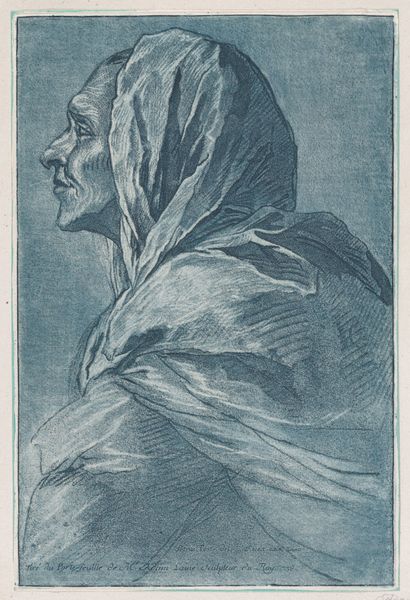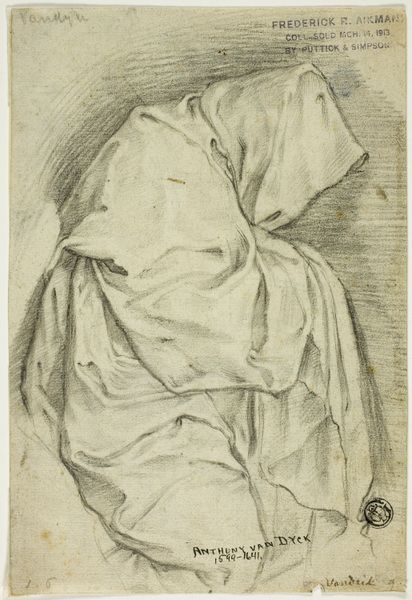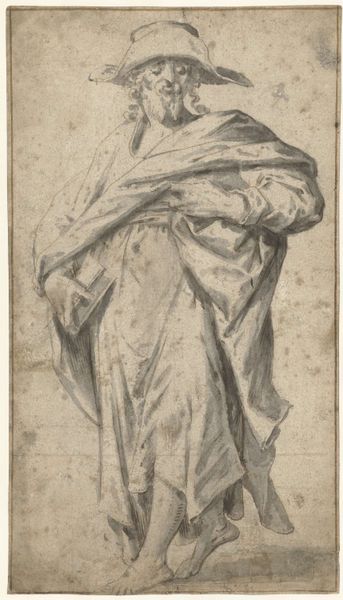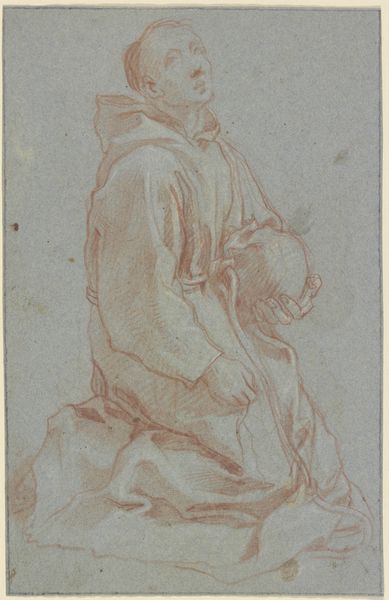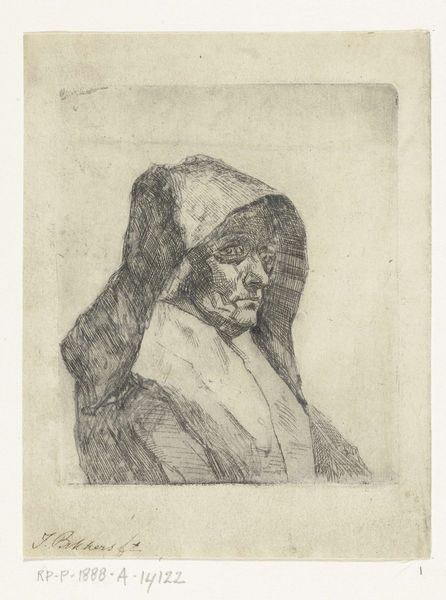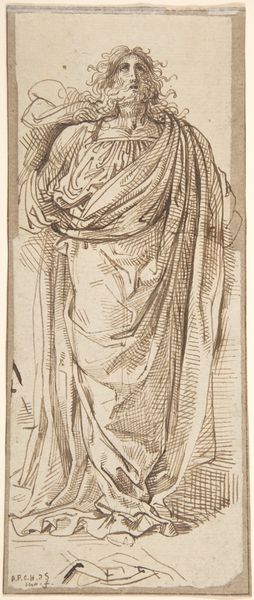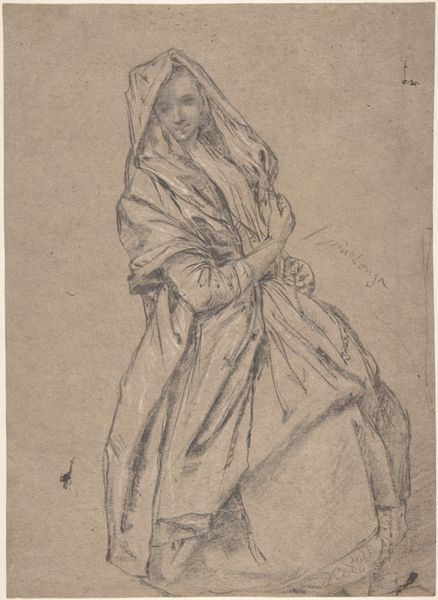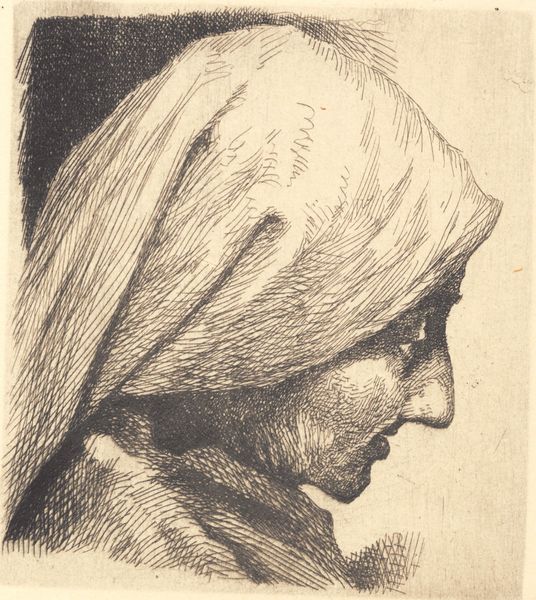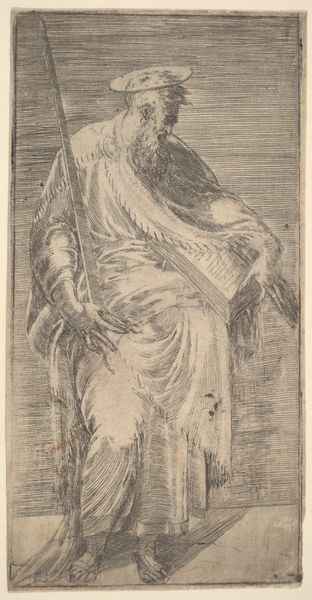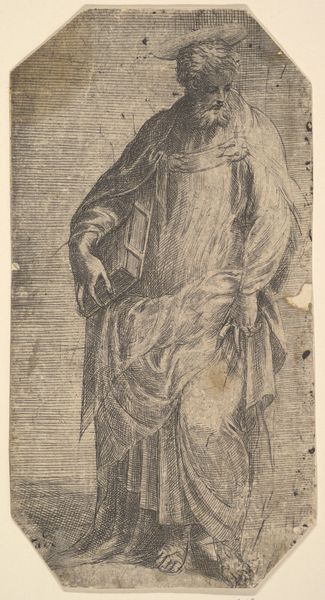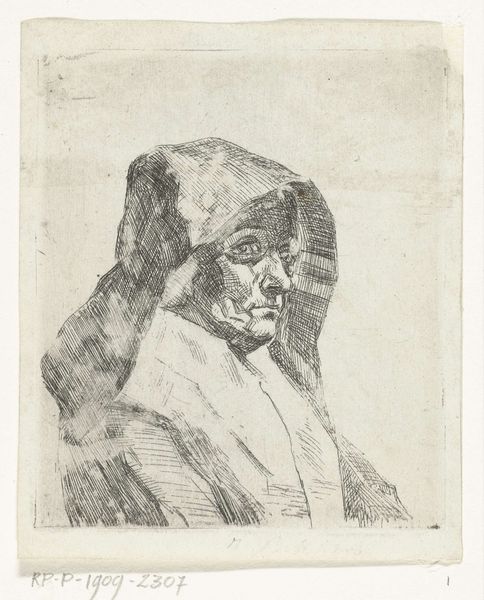
drawing, print, engraving
#
portrait
#
drawing
#
baroque
# print
#
portrait drawing
#
engraving
Dimensions: Sheet: 12 1/16 × 8 1/16 in. (30.6 × 20.4 cm)
Copyright: Public Domain
Editor: This is Pietro Testa's "Head of a Woman," an engraving and print from sometime between 1753 and 1763. The somber tone and profile pose give the figure a dignified, almost statuesque air. How do you interpret this work? Curator: Consider the drapery, the way it frames the face and cascades down. Draped figures are rich in iconographic meaning. Do you see a particular classical reference in the treatment of the fabric, or maybe a religious association? Editor: I hadn’t really considered that, but I do see what you mean. The way it falls reminds me of classical sculptures, but there's a somberness here that maybe hints at mourning? Curator: Precisely! Throughout history, draped figures have often represented virtues, emotions, or even social statuses. The choice to obscure the head can act as a veil, not just a covering but as a symbol for wisdom or grief, maybe a kind of protection, culturally inscribed in Baroque symbolism. Editor: So, it’s more than just a portrait of a woman. The very act of draping contains multiple layers of meaning, even if we cannot be certain about the precise intent. Curator: Yes! This veiled portrait also echoes, visually, across different cultural expressions from funerary sculptures to images of female saints. Its echoes are endless. It tells us about persistent symbolic motifs of femininity across time, memory, and culture. What a gift from the artist. Editor: This has certainly opened my eyes to seeing beyond the surface of portraiture and considering how ingrained symbolism impacts my understanding. Curator: And that makes viewing all art even more interesting and exciting.
Comments
No comments
Be the first to comment and join the conversation on the ultimate creative platform.
